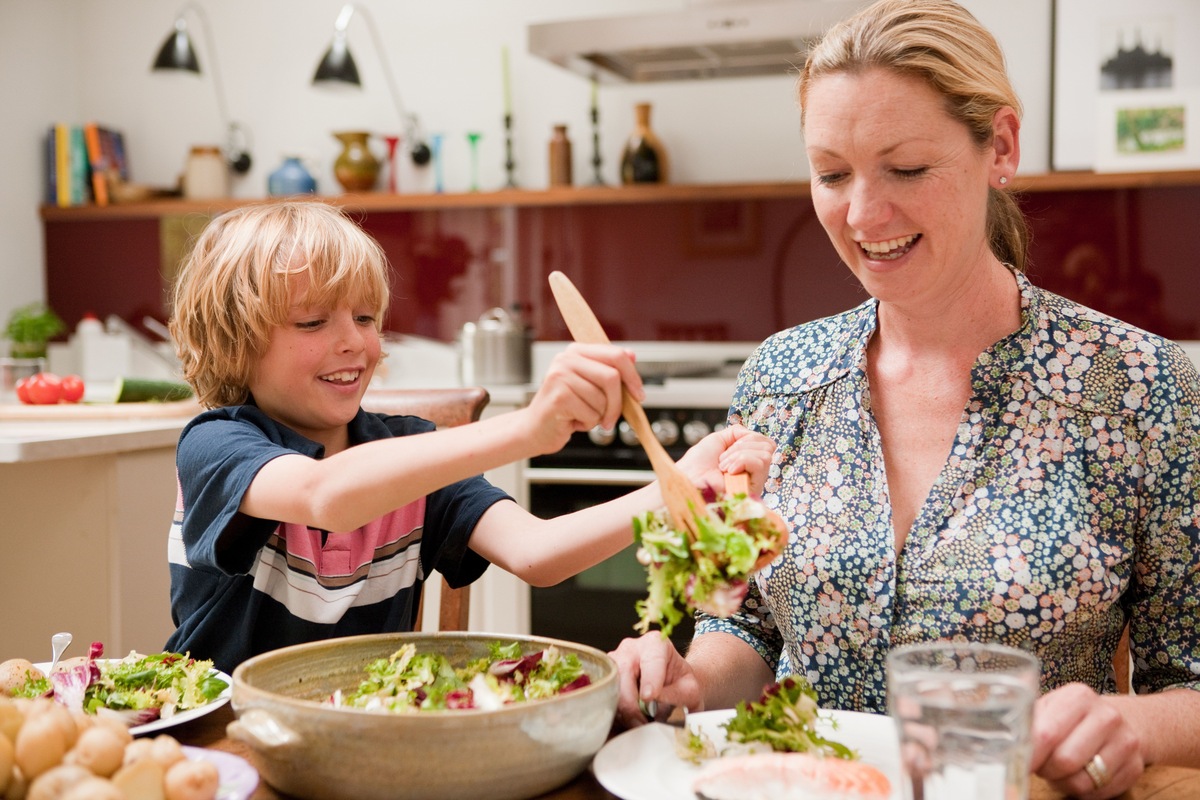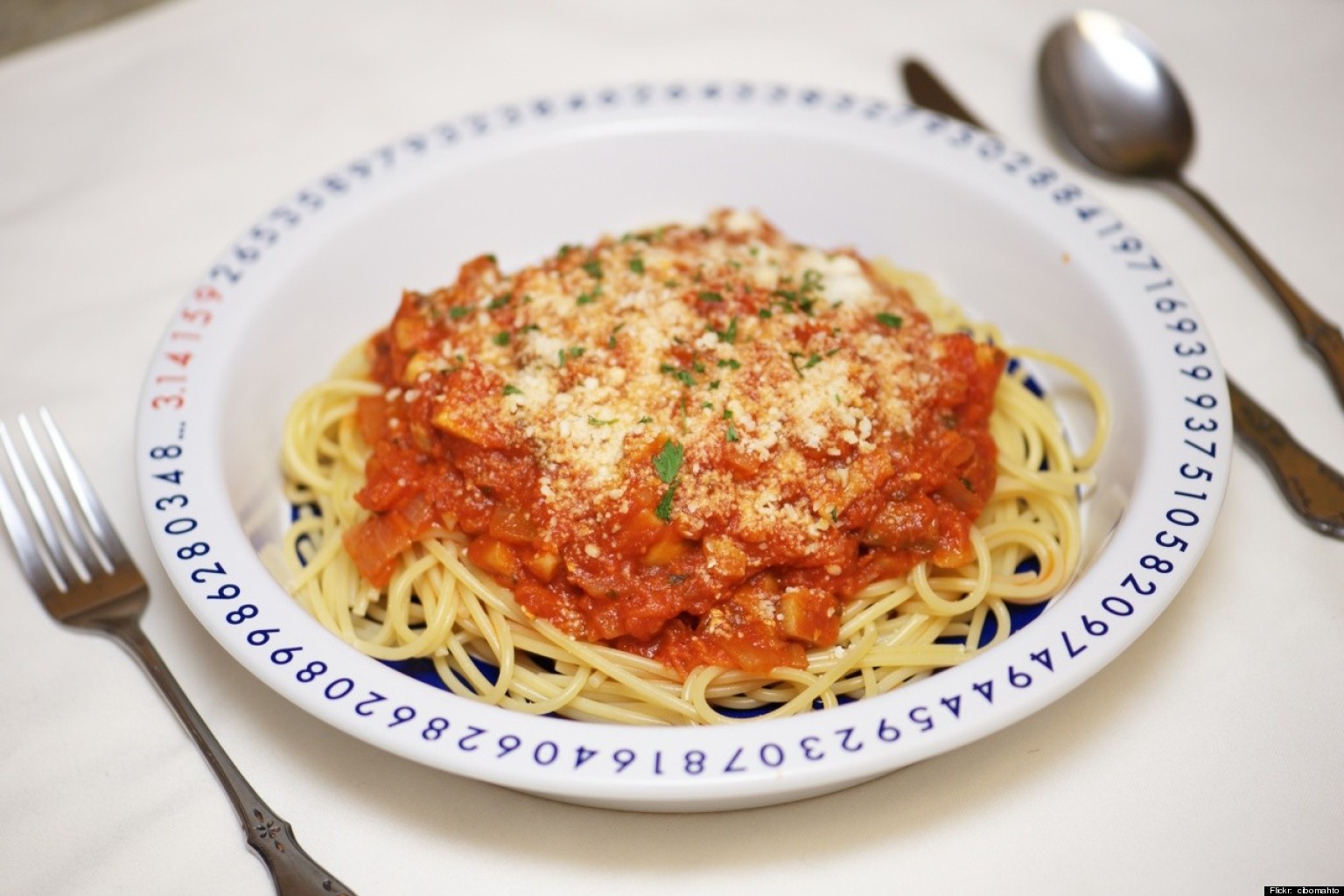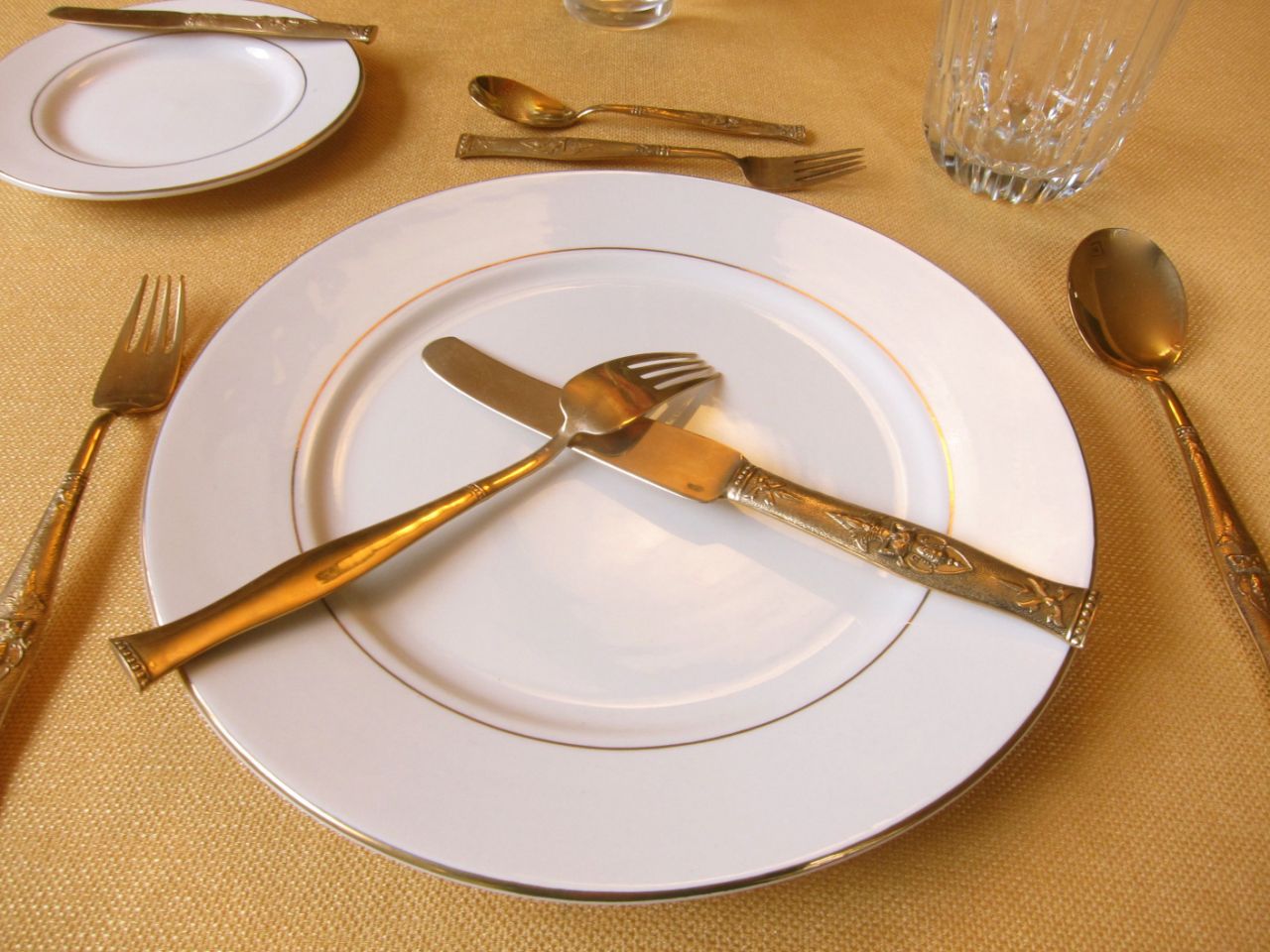Home>Dining>Events & Etiquette>At What Age Should A Child Have Good Table Manners?


Events & Etiquette
At What Age Should A Child Have Good Table Manners?
Modified: March 1, 2024
Discover the proper age for teaching children good table manners and the importance of event and etiquette education. Enhance their social skills for a lifetime of dining etiquette success.
(Many of the links in this article redirect to a specific reviewed product. Your purchase of these products through affiliate links helps to generate commission for Storables.com, at no extra cost. Learn more)
Introduction
Table manners play a crucial role in our social interactions and are an important aspect of etiquette. They reflect our upbringing, respect for others, and our ability to navigate social situations with grace and poise. Instilling good table manners in children from a young age not only enhances their social skills but also prepares them for various formal and informal events they will encounter throughout their lives.
Table manners encompass a wide range of behaviors, including proper use of utensils, appropriate conversation topics, and respectful dining habits. It is essential to teach children the importance of these manners and guide them in developing appropriate behaviors. By doing so, we help them become well-rounded individuals who can comfortably navigate any dining situation they may encounter.
In this article, we will explore the appropriate age to start teaching children good table manners. We will also delve into factors that influence their development, strategies for teaching them, common challenges faced, and tips for encouraging consistent table manners.
Key Takeaways:
- Start teaching basic table manners to children as early as possible, with age-appropriate expectations, consistency, and positive reinforcement, to equip them with essential social skills for various dining situations throughout their lives.
- Encourage consistent table manners in children through positive reinforcement, family involvement, and patience, fostering a nurturing environment that instills respect, consideration, and cultural sensitivity from a young age.
Importance of Table Manners
Table manners go beyond simply knowing how to use utensils correctly. They are a reflection of our respect for others, our ability to show gratitude, and our understanding of social norms. Here are a few key reasons why table manners are crucial:
- Social Etiquette: Good table manners are an essential part of social etiquette. They establish a foundation of respectful behavior, enabling individuals to interact smoothly with others in a dining setting. Whether it’s a formal dinner party or a casual gathering, displaying impeccable table manners leaves a positive impression on others.
- Respect and Consideration: Practicing good table manners demonstrates respect and consideration for fellow diners. When children understand the importance of waiting their turn to speak, using utensils appropriately, and not interrupting others, they show respect for the dining experience and the individuals around them.
- Professional and Formal Settings: As children grow older, they will encounter professional and formal dining situations, such as business lunches or formal events. Having good table manners gives them confidence and the ability to navigate these settings with ease. It shows their sophistication and ability to conduct themselves appropriately in various social situations.
- Health and Hygiene: Table manners can also promote good hygiene and health. Children who wash their hands before meals, cover their mouths when they cough or sneeze, and avoid touching excessive food with their hands are less likely to spread germs and infections.
- Cultural Sensitivity: Table manners can vary across cultures. Teaching children about different dining customs and practices promotes cultural sensitivity and awareness. It helps them navigate diverse social settings and fosters an appreciation for different traditions and customs.
By instilling strong table manners in children, we equip them with essential skills that will benefit them throughout their lives. Not only will they be more confident and socially adept, but they will also be respectful and considerate individuals who can navigate different dining scenarios with grace and ease.
Factors Influencing the Development of Table Manners
The development of table manners in children is influenced by various factors, including their age, family environment, social exposure, and cultural background. Understanding these factors can help parents and caregivers approach the teaching process effectively. Here are some key factors to consider:
- Age: The age of a child plays a significant role in their ability to grasp and implement table manners. Younger children may struggle with certain concepts, such as using utensils correctly or sitting still during a meal. However, as they grow older, their fine motor skills and understanding of social expectations tend to improve, making it easier for them to learn and practice proper table manners.
- Family Environment: The family environment plays a crucial role in shaping a child’s table manners. Children observe and imitate the behaviors they see at home, so it’s essential for parents and caregivers to model good table manners. Consistently practicing and emphasizing the importance of table manners during family meals sets a positive example and creates a supportive environment for children to develop their own manners.
- Social Exposure: The social exposure a child receives can greatly influence their understanding and implementation of table manners. Children who regularly dine out or attend social gatherings may have more opportunities to observe and learn from others. Exposing children to various dining scenarios helps them become familiar with different etiquette expectations and adapt to different settings.
- Cultural Background: Cultural background also influences table manners. Different cultures may have distinct dining traditions and practices. It is important to consider and teach children about the specific cultural expectations of table manners, as this promotes cultural sensitivity and understanding.
- Consistency and Reinforcement: Consistency and reinforcement are vital in the development of table manners. Regularly reminding children of the expected behaviors, offering positive reinforcement for good manners, and gently correcting inappropriate behaviors can help children internalize and practice proper table manners consistently.
By taking these factors into account, parents and caregivers can adjust their approach to teaching table manners and provide a supportive environment that enhances a child’s understanding and implementation of these important social skills.
Recommended Age for Teaching Table Manners
The recommended age for teaching table manners to children can vary depending on their developmental stage and readiness. While there is no specific age when table manners should be introduced, experts generally agree that it is beneficial to start teaching basic manners as early as possible. Here are some guidelines to consider:
- Early Childhood: In the early years, children are still developing their fine motor skills and may have difficulty using utensils properly. However, this is an ideal time to introduce basic concepts such as sitting at the table during meals, using a napkin, and saying please and thank you. Simple and age-appropriate expectations can be set to establish a foundation for future learning.
- Preschool Age: As children enter the preschool age, typically around 3 to 5 years old, they are more capable of understanding and practicing basic table manners. At this stage, parents and caregivers can focus on teaching proper handling of utensils, chewing with their mouths closed, and not interrupting others during meals. Consistency and positive reinforcement are key to helping children internalize these behaviors.
- School Age: By the time children reach school age, around 6 to 12 years old, they should have a solid foundation in basic table manners. At this stage, parents can expand on their child’s knowledge by introducing more complex manners, such as using appropriate dinner conversation topics, waiting for everyone to be served before beginning to eat, and asking to be excused from the table. It is also a good time to introduce table-setting skills and the proper use of more varied utensils.
- Teenage Years: During the teenage years, children should have a strong grasp of table manners and be able to handle formal dining situations. Continuing to reinforce good manners and etiquette is essential during this stage, as teenagers may be more likely to encounter formal events, such as proms or dinner parties. Helping them navigate these settings with confidence and grace will set them up for success in their adult lives.
It is important to remember that every child develops at their own pace. The recommended ages are guidelines, and parents should use their judgment to assess their child’s readiness for learning and practicing table manners. Consistency, positive reinforcement, and age-appropriate expectations are key to instilling good table manners in children at any age.
Children can start learning table manners as early as 3-4 years old. Encourage good behavior by setting a positive example, using gentle reminders, and praising their efforts. Consistency is key in reinforcing good habits.
Strategies for Teaching Table Manners to Children
Teaching table manners to children requires patience, consistency, and creative approaches. Here are some effective strategies to help instill good table manners in children:
- Lead by Example: Children learn by observing, so it’s important for parents and caregivers to model good table manners themselves. Demonstrate the desired behaviors, such as using utensils correctly, sitting up straight, and engaging in polite conversation during mealtime.
- Make It Fun: Turn learning table manners into a fun and interactive experience. Use games, role-playing, and storytelling to introduce and reinforce good manners. For instance, you can create a “manners jar” where children collect tokens or rewards for displaying proper table etiquette.
- Set Clear Expectations: Clearly communicate your expectations for table manners. Explain why specific behaviors are important and how they contribute to a positive dining experience. Use age-appropriate language to explain the reasoning behind each rule.
- Practice at Home: Consistently practice good table manners during family meals at home. Encourage children to use utensils, chew with their mouths closed, and take turns speaking. Reinforce positive behaviors and gently remind them of any necessary corrections.
- Role-Playing: Engage children in role-playing scenarios where they can pretend to be a host or a guest at a formal dinner. This helps them understand the expectations and behaviors associated with different dining situations.
- Provide Guidance: Offer guidance and prompts during meals. Remind children to ask for items to be passed instead of reaching across the table. Teach them how to politely decline food they do not want or are allergic to. Encourage them to thank the cook or host for the meal.
- Practice Outside the Home: Take advantage of opportunities to practice table manners outside the home, such as going to a restaurant or attending social events. Introduce new experiences gradually and provide guidance on appropriate behaviors specific to those settings.
- Use Visuals: Utilize visual aids, such as placemats with illustrations of proper utensil placement or cue cards with reminders of table manners. These visuals serve as helpful reminders and reinforcement during mealtime.
- Encourage Active Participation: Involve children in setting the table, folding napkins, and preparing meals. By actively participating in mealtime preparations, children develop a sense of ownership and responsibility, which can positively impact their adherence to table manners.
Each child is unique, so it’s important to tailor these strategies to their individual needs and learning styles. By incorporating these approaches into their daily routines, parents can help their children develop and maintain good table manners, ensuring they feel confident and comfortable in any dining setting.
Common Challenges in Teaching Table Manners
Teaching table manners to children can come with its fair share of challenges. Understanding and addressing these challenges can help parents and caregivers navigate the teaching process more effectively. Here are some common challenges to be aware of:
- Resistance to Change: Children may resist adopting new behaviors, especially if they are already comfortable with their current habits. It can be challenging to get them to break old habits and embrace new ones, but patience and consistent reinforcement are key in overcoming this challenge.
- Restlessness: Young children are naturally full of energy and may have difficulty sitting still during meals. They may become impatient or agitated, making it harder to focus on practicing good table manners. Incorporating engaging activities like storytelling or interactive games can help manage their restlessness and keep them interested in mealtime.
- Peer Influence: Children may adopt behaviors they witness in their peers, even if they differ from the table manners they have been taught. They might be more inclined to imitate friends who have different dining habits, leading to challenges in reinforcing consistent table manners. Continued reinforcement and open communication about the importance of good table manners can help counteract the influence of peers.
- Selective Eating Habits: Some children can be picky eaters, refusing certain foods or displaying negative attitudes towards meals. It can be tempting for parents to let these eating habits slide and focus solely on table manners. However, it’s important to encourage a positive attitude towards different types of food and make efforts to expand their palate while also reinforcing good table manners.
- Short Attention Span: Young children, in particular, have short attention spans and may struggle to retain information about table manners. Breaking down the teaching process into smaller, manageable concepts and regularly reinforcing these concepts in a fun and interactive way can help keep their attention and improve their understanding and retention of table manners.
- Overcorrection: While it’s important to correct inappropriate behaviors, it’s equally important not to overcorrect or focus solely on their mistakes. Children should also receive positive reinforcement for displaying good table manners to motivate and encourage their continued improvement.
Addressing these challenges requires patience, consistency, and a positive approach. By being aware of these potential obstacles and employing strategies to overcome them, parents and caregivers can help children develop and maintain good table manners in a way that is effective and enjoyable for everyone involved.
Tips for Encouraging Consistent Table Manners
Encouraging consistent table manners in children requires a combination of positive reinforcement, consistency, and patience. Here are some tips to help parents and caregivers foster and maintain good table manners:
- Lead by Example: Model the behaviors you want to see in your children. Demonstrate proper table manners consistently during family meals to set a positive example.
- Consistency is Key: Establish clear expectations for table manners and consistently reinforce them. Children thrive on routine and repetition, so consistently reminding them of the desired behaviors and gently correcting any lapses will help them internalize good manners.
- Positive Reinforcement: Offer praise and rewards for displaying good table manners. Recognize and appreciate their efforts to encourage them to continue practicing proper etiquette.
- Make it a Family Affair: Involve the whole family in learning and practicing table manners. Encourage children to support and remind each other about the expected behaviors. This fosters a sense of teamwork and creates a positive dining environment.
- Mealtime Conversations: Use mealtime as an opportunity for engaging conversations. Teach children to listen actively and take turns speaking. Encourage them to ask thoughtful questions and engage in polite conversation, which enhances their social skills.
- Set the Table as a Learning Experience: Involve children in setting the table, arranging the cutlery, and folding napkins. This teaches them the basics of table setting and helps them understand the importance of an organized dining environment.
- Dining Out Practice: Take children to restaurants or other dining establishments periodically to practice their table manners outside of the home. Use these experiences as opportunities to reinforce appropriate behavior and introduce them to different dining settings and customs.
- Socialize with Others: Encourage your children to socialize and dine with friends and extended family members. This exposes them to varying dining situations and helps them become comfortable practicing good table manners in different social contexts.
- Be Patient and Encouraging: Remember that learning and refining table manners takes time. Be patient with your child’s progress and provide gentle guidance and reminders. Focus on encouraging their efforts rather than emphasizing mistakes.
- Celebrate Milestones: Celebrate your child’s progress in mastering table manners by acknowledging their achievements. This can be done through small rewards or special recognition, motivating and reinforcing their positive behavior.
By implementing these tips, parents and caregivers can create an environment that fosters consistent table manners. With patience, positive reinforcement, and the application of these strategies, children will develop a solid foundation of good table manners that will benefit them throughout their lives.
Conclusion
Teaching children good table manners is an essential part of their overall development and socialization. It not only enhances their etiquette skills but also equips them with the confidence and grace to navigate various dining situations they may encounter in their lives.
Throughout this article, we have explored the importance of table manners and the factors that can influence their development. We have also discussed the recommended age for teaching table manners, effective strategies for teaching them, common challenges that may arise, and tips for encouraging consistent table manners.
Table manners go beyond using utensils correctly; they reflect respect, consideration, and cultural sensitivity. By instilling these qualities in children from a young age, we help them become well-rounded individuals who can confidently interact with others in any dining setting – from casual family meals to formal events.
It is crucial to lead by example and consistently reinforce desired behaviors. By making learning fun, involving the whole family, and providing positive reinforcement, parents and caregivers can help children develop strong table manners and instill the importance of respecting others during mealtime.
While challenges may arise, such as resistance to change or peer influence, patience, consistency, and a positive approach can overcome these hurdles. By addressing these challenges and implementing strategies tailored to each child’s needs, parents can create a nurturing environment that fosters consistent table manners.
In conclusion, teaching children good table manners is an ongoing process. It requires patience, consistency, and a commitment to modeling and reinforcing proper behavior. By instilling these essential skills from a young age, we equip children with lifelong etiquette that will serve them well in their personal and professional lives. So, let’s nurture their development and guide them towards becoming polite, respectful, and confident individuals at the dining table and beyond.
Frequently Asked Questions about At What Age Should A Child Have Good Table Manners?
Was this page helpful?
At Storables.com, we guarantee accurate and reliable information. Our content, validated by Expert Board Contributors, is crafted following stringent Editorial Policies. We're committed to providing you with well-researched, expert-backed insights for all your informational needs.















0 thoughts on “At What Age Should A Child Have Good Table Manners?”